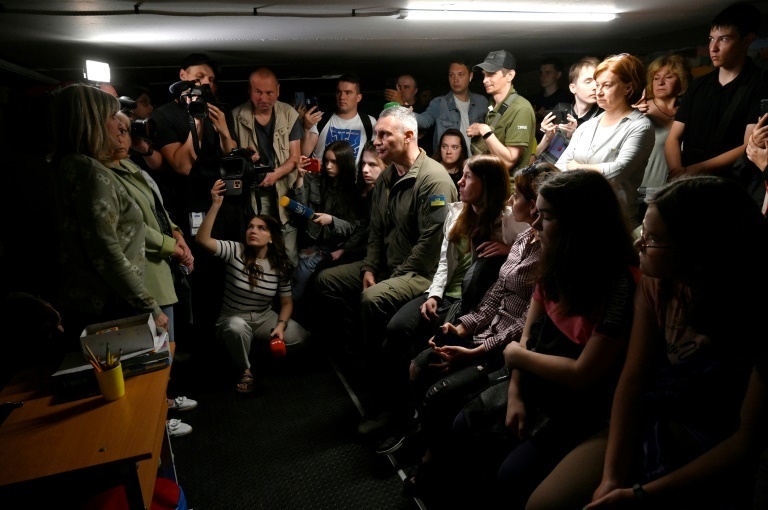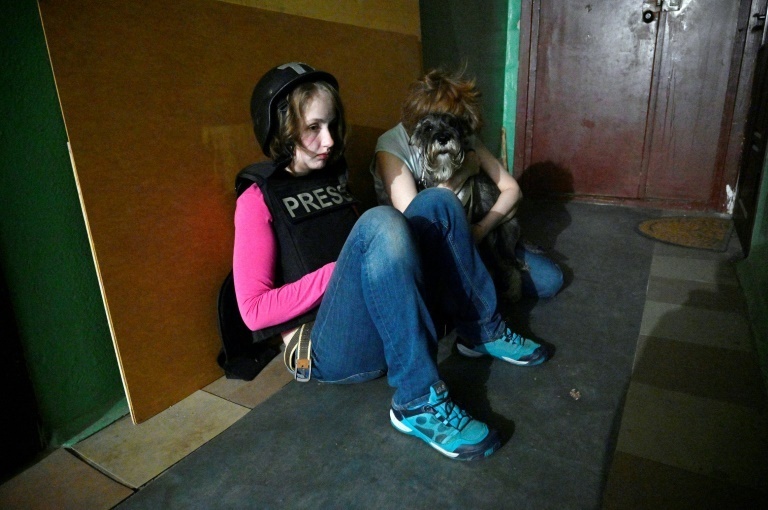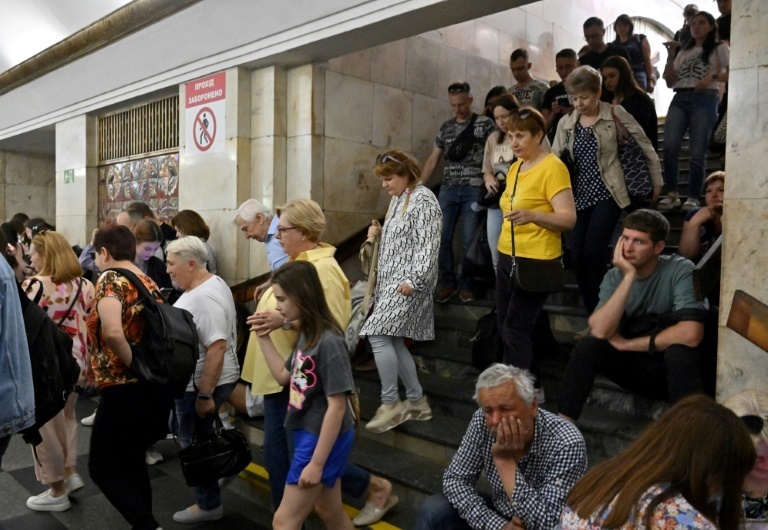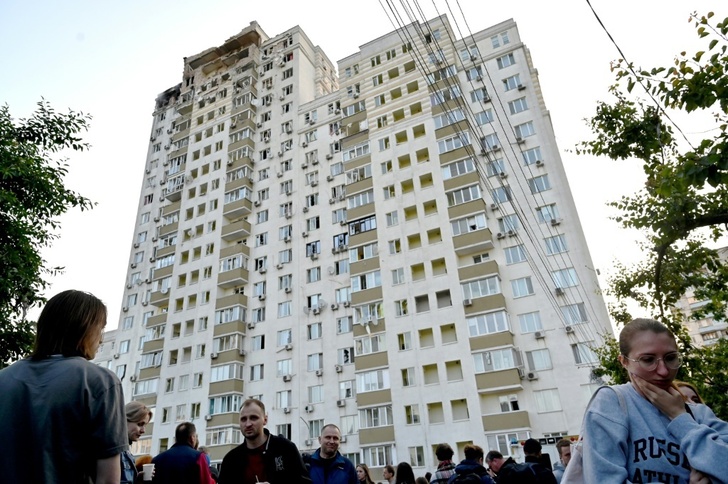An old door has been laid over broken steps to provide a precarious way down to a bomb shelter in the east of Ukraine's capital Kyiv.
Inside, locals switch on torches to view the vast space, designed decades ago and originally equipped with toilets, water tanks, two separate entrances and a ventilation system.
But with war with Russia raging and amid Moscow's regular attempts to strike Kyiv, this Cold War-era bomb shelter is no longer functioning.
Located under an abandoned building, the shelter has no lighting and the ventilation shaft is blocked with trash. Only a few homeless people sleep here.
"It's been in this state for 10 years," said local resident Oleksandr, 43.
"This is a real bomb shelter. If it was cleaned up, 350 people could fit in here: almost two blocks of flats," said Kateryna Shylo, 42, a mother-of-three who lives near the shelter on Suleiman Stalsky Street.
Residents are frustrated that the authorities have abandoned the purpose-built bomb shelter, despite an official drive to inspect and improve the facilities.
This came after a recent tragedy when a mother, her 9-year-old girl and another woman were killed by missile debris on June 1 while trying to enter a locked shelter in a Kyiv clinic during nighttime strikes.
- Almost third locked -
As a result, a commission including Kyiv's Mayor Vitali Klitschko inspected more than 4,600 air-raid shelters in Kyiv this month.
It ruled that 65 percent were useable, while a further 21 percent needed work and 14 percent were unfit for purpose.

In the Soviet era, bomb shelters were built around the city and had regular upkeep, due to the threat of nuclear war.
Since then, many have fallen into disrepair.
The shelter on Suleiman Stalsky Street was illegally privatised and changed hands many times. It is no long even marked on a public map of shelters.
Yet "at the start of the war people came here -- there was no choice," said Shylo.
In the first months after the Russian invasion in February 2022. residents tried to improve it, bringing beds, chairs and benches, but they regularly had to clean up human waste in a space shared with homeless people and drug addicts, and it was very cold sleeping there, Shylo said.
"We just got tired of it."
Officials could "influence the owner by legal means to bring the premises into proper condition," said Oleksandr.
- 'Bunk beds and gas masks' -
The bomb shelter is rated "сlass 2", the second highest category of protection against a blast wave.
This is much safer than cellars, the most basic type of shelter.

"There was everything there: there were bunk beds... there were even gas masks," said Ganna Skirsko, 67, who used to come and clean there.
Yet in a letter to a resident this month, shown to AFP, a district official, Pavlo Babiy, said restoration would cost 1.8 million hryvnias ($51,000) and was "not economically feasible".
- 'Not worth it to stay' -
In western Kyiv, an official shelter on Beresteiskiy Avenue looks much cleaner.
But it also has rusty ventilation pipes and water tanks and broken toilets. The walls are mouldy with paint peeling off.
The shelter was being used for storage but residents cleared out trash and put in basic furniture at the start of the war, when many used it.
As an air raid siren wails, local resident Anna Boryshkevych goes down there with just one other person.
The 30-year-old said the shelter puts most people off.

"It's not worth it for someone to stay here -- you try to weigh your chances: maybe it's better to stay at home in comfort."
Many residents of the 1960s-era building above are elderly, she said, pointing to the steep steps down.
"How can a person get down here in a wheelchair? That's a question that is not even asked."
Boryshkevych notes that the shelter has at least had one repair: the electric light now works, which she links to the official response to recent deaths.
Every time there's a new tragedy, there are calls for change, she says, but "you somehow get used to not having a normal shelter."
am/bur/pvh
© Agence France-Presse
Your content is great. However, if any of the content contained herein violates any rights of yours, including those of copyright, please contact us immediately by e-mail at media[@]kissrpr.com.
Source: Story.KISSPR.com

